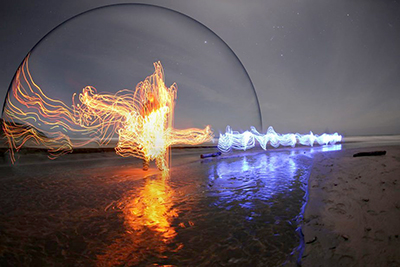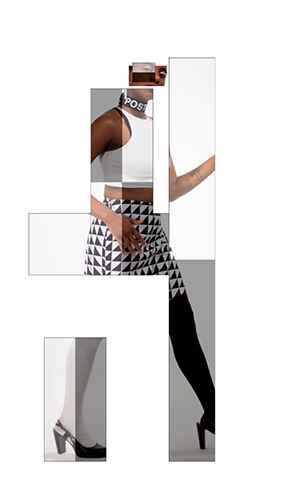Nine graduate students from the Digital Arts and New Media M.F.A. program (DANM) will conclude two years of artistic study at UC Santa Cruz with Interstices—an exhibition of their work running April 27-29, at the UCSC Digital Arts Research Center.
"Interstices" is defined as an intervening space, an interval between things, parts, or times. Selected by the students as the title for the 2018 show, it refers to the historical moment and conditions that have shaped their work and lives.
"We are thrilled to be presenting this work as part of DANM's rich tradition of working at the intersection of the arts, humanities, sciences and technology," noted Robin Hunicke, acting director of the DANM program.
"Whether that's taking a hard look at how entertainment and social media impact our society, engaging in projects of civic participation and social justice, exploring race, representation and gender, or looking at the environmental impacts of the Anthropocene, DANM students present work that asks hard questions and inspires dialogue."
"Now, more than ever, it is so critical that the University provides students with the opportunity to explore how the digital impacts our lives, and to envision how we can approach technology as part of critical artistic practices," Hunicke added. "We're honored to host this event in the Digital Arts Research Center and invite the entire campus to come and participate."
The exhibition will be curated by John Weber, director of the Institute of the Arts and Sciences at UC Santa Cruz. He noted that the artists in this year’s exhibition embrace video, virtual reality, the internet, computer programming, photography, and digital fabrication as baseline tools and conditions for making art.
"Like the DANM program, the students adopt a resolutely interdisciplinary stance and approach digital technology as a fundamental component of 21st century art, even as they insist on the freedom to work with analog media as needed," said Weber.
"Yet technology, however omnipresent, is not an end in itself. It is a means to speak about the social and natural worlds and be heard. There is hope here, along with skepticism, critique, anxiety, and fascination. This work testifies, if at times quietly, to the belief that art can challenge the world and should ultimately change it," he added.
The projects in the exhibition include Lindsay Moffat’s "We Are All the Same But Different," a piece that explores the the systematic suffering of industrially-farmed animals. Exposing viewers to the realities of animal agriculture, it includes stop-motion animation, video footage of animals reared inside the factory farm system, plus an experiential, interactive installation component.
Simon Boas’s project, "No in Disguise" features videos of men reading transcripts of interviews with dating app users who express harmful attitudes toward women. He notes that his video "recombines the physical features of the readers into an endless procession, resembling every man and no man in particular."
And Tony Assi’s "Gaze Relations" illuminates the differences between people and computer vision algorithms in perceiving the body. He notes that "gaze tracking demonstrates the complexity of human perception in comparison with body-detection algorithms that reduce the body to simple patterns, revealing and contrasting the processes of human and machine vision."
Gallery hours for the show are noon to 5 p.m., April 27-29. Artists’ talks with the students take place from 2 to 4 p.m. on Saturday, April 28, with a public reception following from 4 to 6 p.m. Admission is free and open to everyone. For more information, visit the DANM web site or call (831) 459-1554.




